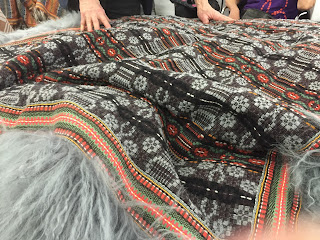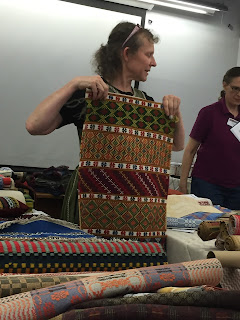Two tips for knitting lace socks
 |
| Oriel lace patterned socks |
I love textured patterns but it took me too long to realize my love of lace-patterned socks. The first lace socks I knit were in the Oriel pattern from Charlene Schurch's Sensational Knitted Socks. From there, I was hooked.
Knitting socks is not a priority. In fact, they just barely make the list of handwork. Typically theyre m'y low-key, go-to project when I'm too tired to do much of anything else. I don't care how long it takes me to knit a pair of socks. It might be months. That's OK.
 |
| Waving Lace patterned socks |
I've learned so much about knitting socks by....knitting them, of course! Two recent ah-ah's related to my lace sock knitting are fit and blocking/drying.
Lace patterned socks to fit
Check the fit before knitting to the measured foot length. Fortunately, I checked the first sock of Oriel before finishing it off. (It is a top-down). I had knit to my tried-and-true foot measurement--like I had knit my other socks--but fortunately tried them on before finishing. I had gone too far. As lace stitches stretch much more than most other stitches (I know, I should have thought of this from the cast-on), the sock was about an inch too long. I tinked about an inch before finishing and it's a perfect fit. Good lesson. I won't forget. |
| Sock blockers/dryers |







